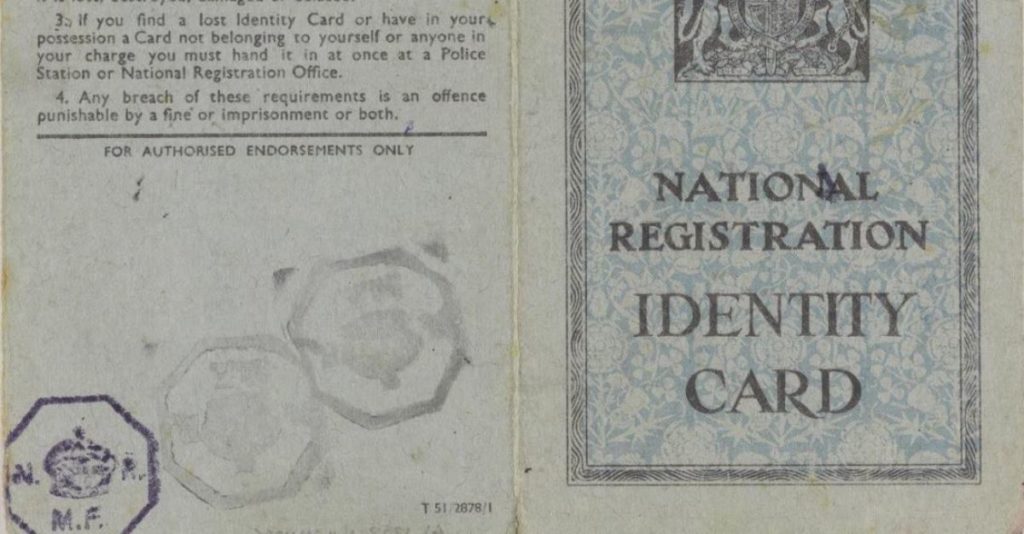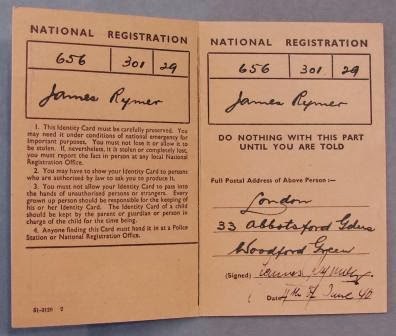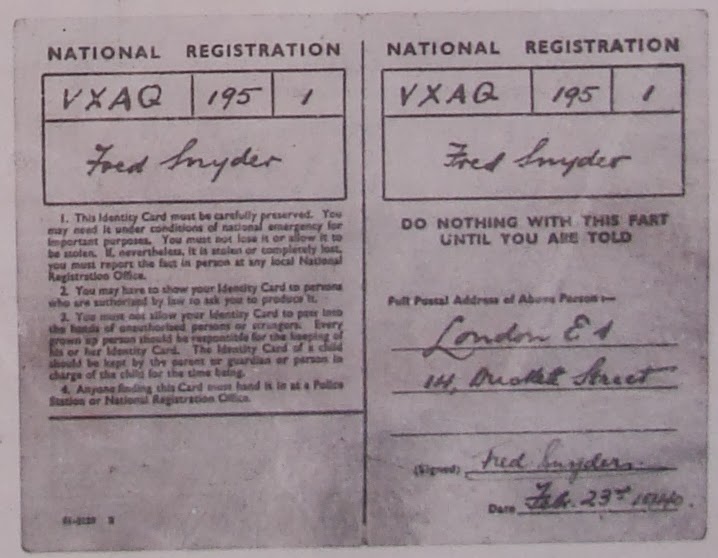On September 3, 1939, England declared war against Germany. On September 5 of that same year the English Parliament, with Royal Assent, passed a National Registration system. With war declared, evacuations looming, and the last census eight years old, the government wanted to know who lived in England and how to keep track of them. On the evening of September 29, 1939, a national registration took place of all people in the United Kingdom. The National Registration system was instituted by Sir Sylvanus Vivian, the Registrar General from 1921 to 1945.
The National Identity Cards that were issued as a result of the registration were also coupled with ration books which were introduced in late 1939 or early 1940. In order to receive rationed goods, everyone needed a ration book and a National Identity Card. People also needed to carry the cards at all times.
The identity card was not a complicated document. Today, we would laugh at that sort of document being used for identification purposes. The identity card listed the person’s name and registration number. Later, after 20 May 1940, people were told to write their addresses on the right part of their identity card and to sign it.
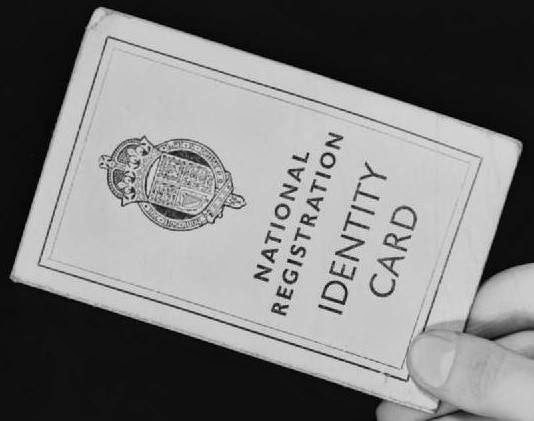
The registration numbers were fairly basic as well, a four letter code, then a number, followed by another number. The four letter code was a district code, similar to an enumeration district. The next number was a household number. The final number was the person’s position within the household. So, AKAZ/145/3 would mean the district code AKAZ, Household 145 and person #3 in the household.
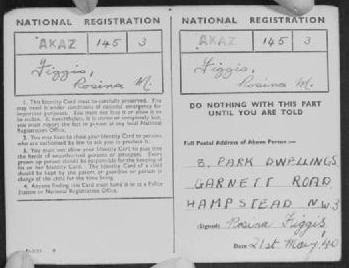
Identity cards had to be carried at all times and needed to be presented when using ration books. The cards could be demanded by police, air raid wardens and members of the Home Guard, particularly when travelling on the train.
While the registration cards were quite simple in appearance, that simplicity was crucial for the “checking” system, of which Sir Vivian was particularly proud. When presented with a dubious card, an officer could ask the bearer for their birth date so that it could be checked against the central registry. Since the date of birth was not listed on the card, the bearer would either have to know the information or make a wild guess. The card’s simplicity was so effective in this regard that Sir Vivian was able to resist proposals to make the card more complex by adding a photograph.
Josef Jakobs
On the evening of January 31, 1941, as he was boarding an aircraft bound for England, Josef Jakobs was handed a British Identity Card by a Major Merkel. Josef was told to sign the card as James Rymer.
The identity card given to Josef by the Germans was a forgery, and not even a very good one. Even a cursory glance by a Home Guard volunteer or a police constable would have raised questions about its authenticity.
1. National Registration Number – The registration number on Josef’s Identity Card was 656/301/29. It should have been four letters/number/number.
2. Address – the address on Josef’s card was written in a continental fashion, the city followed by the street address. The address should have been written:
33 Abbotsford Gardens
Woodford Green
London
3. Name – the name in the two boxes should have been written with the surname first on its own line, followed by the first name on the line below and slightly indented:
Rymer
James
4. Handwriting – On a genuine card, the address was filled in after May 1940 and should have been in a different handwriting, using a different pen.
5. Folding – Josef’s forged card was machine folded – genuine cards were folded by hand.
It turned out that the information on Jakobs’ Identity Card had been provided to the Germans by double-agent SNOW on 12 December, 1940. The Germans had requested the names and addresses of people whose houses had been destroyed by bombs. There was a James Rymer who had lived at 33 Abbotsford Gardens, Woodford Green and who had been bombed out sometime between 29 October, 1940, and 12 December, 1940. SNOW also sent Rymer’s genuine registration number to the Germans: ARAJ/301/29.
The number on Josef’s card was virtually identical to the code sent by SNOW except that the four letters had been replaced by the numbers 656. Several MI5 officers wondered why the Germans would have altered the genuine registration number.
Another German agent, Karel Richter, was captured near London Colney in Mary 1941 and carried an Identity Card in the name of Fred Snyder. His card contained the same errors as Josef’s card in terms of name format, handwriting, address format and folding. While the National Registration number followed the correct format – four letters/number/number – it turned out that VXAQ was an impossible code since none of the letter codes started with the letter “V”. In fact, the code had been sent over by SNOW on 10 August, 1940. In addition, Richter’s card was signed on 23 February, 1940, which was wrong, as the cards were only to be signed after 20 May, 1940.
In hindsight, it is clear that the German agents had extremely inadequate identification papers. The German Secret Service, in providing these forged identity papers were relying on information provided by “their” agents in England. They thought the information was genuine, little realizing that all of “their” agents had become double agents and were working for MI5.
References
National Archives, MI5 files for Josef Jakobs & Karel Richter
Agar, Jon. Identity cards in Britain: past experience and policy implications. History & Policy, accessed 6 January 2014. (N.B. 2021 – link no longer works)
Header image – Imperial War Museum – Postwar National Registration Identity Cards © Documents.8086
Copyright (c) G.K. Jakobs, 2014.
